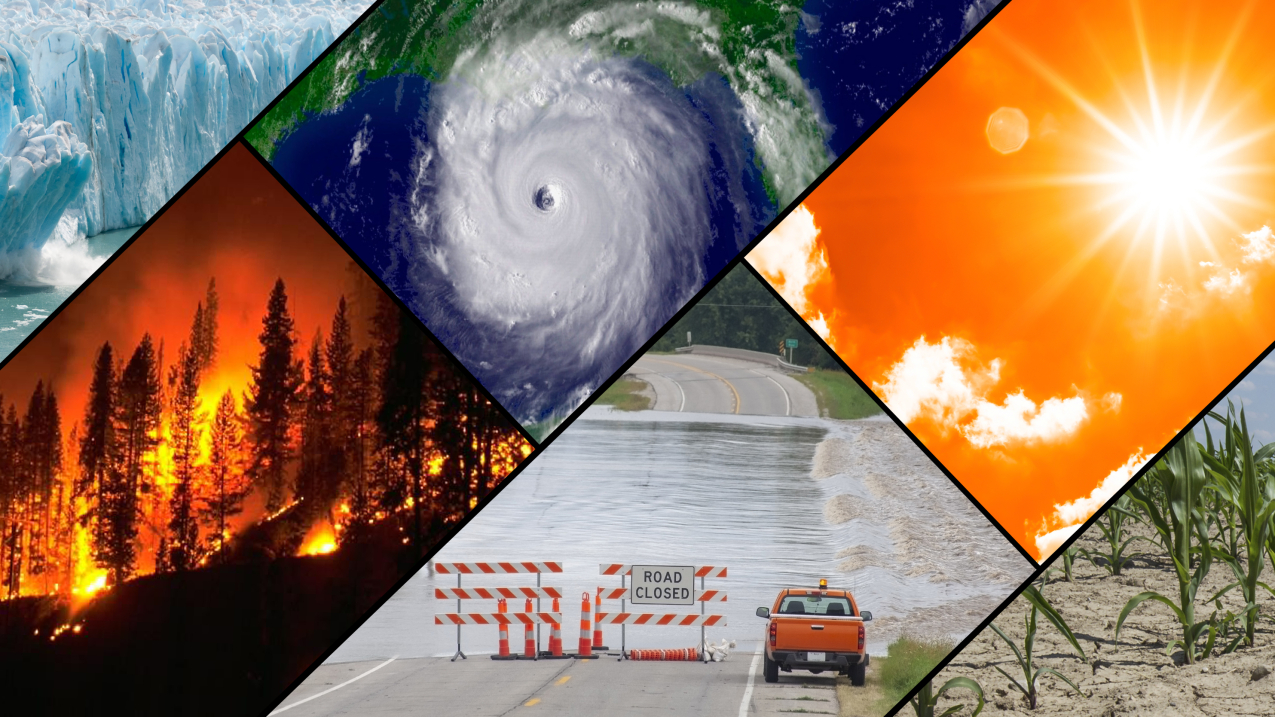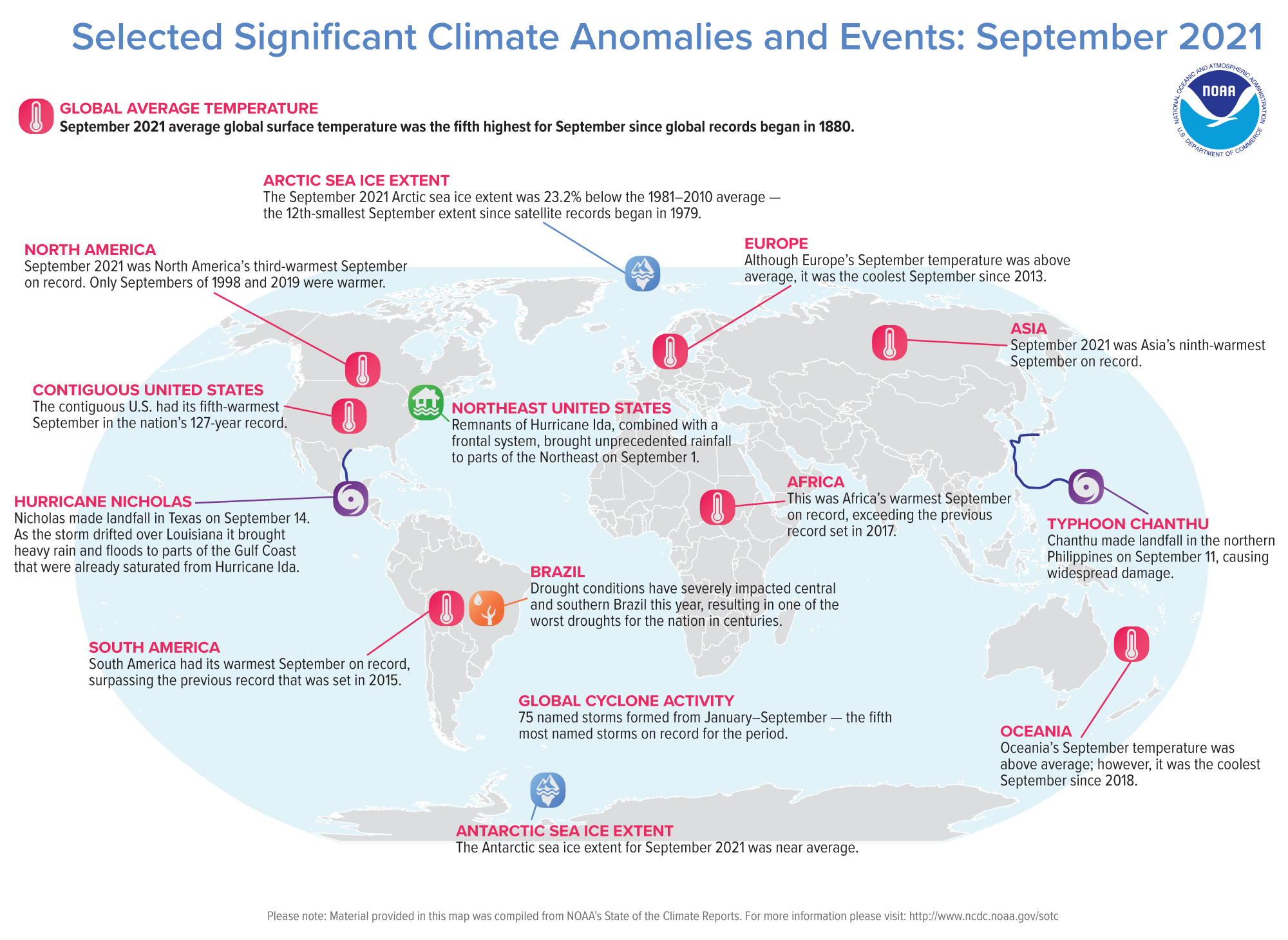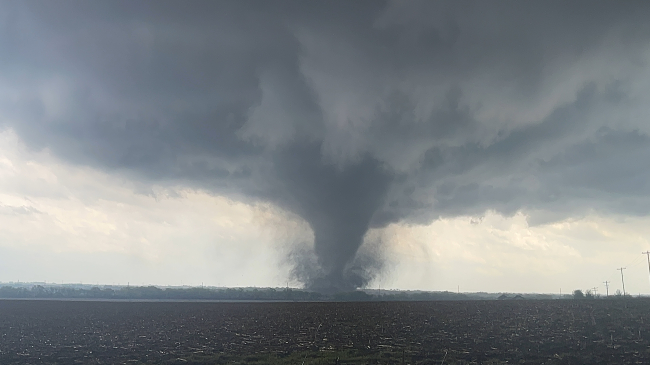The first 9 months of the year ranked among the top-10 warmest

A collage of typical climate and weather-related events: floods, heatwaves, drought, hurricanes, wildfires and loss of glacial ice. (Image credit: NOAA)
The world just saw its fifth-warmest September since 1880, according to scientists at NOAA’s National Centers for Environmental Information.
September added to a warm string of months for 2021 so far, making for the sixth-warmest year-to-date on record.
According to NCEI’s Global Annual Temperature Rankings Outlook, 2021 is almost certain (a more than 99% chance) to rank among the 10-warmest years on record.
Here’s more highlights from NOAA’s September global climate report:
Climate by the numbers
September 2021
The average global temperature for September was 1.62 degrees F (0.90 of a degree C) above the 20th-century average of 59.0 degrees F (15.0 degrees C), making September 2021 the fifth-warmest September in the 142-year climate record.
The world’s eight warmest Septembers have all occurred since 2014.
Looking regionally, the Southern Hemisphere saw its warmest September on record, while the Northern Hemisphere had its fifth warmest.
South America and Africa had their warmest Septembers on record, while North America had its third-warmest September, and Asia saw its ninth warmest.
The year to date (YTD) I January through September 2021
The YTD average global temperature was the sixth warmest on record at 1.49 degrees F (0.83 of a degree C) above the 20th-century average.
The Northern Hemisphere’s YTD temperature was also sixth warmest at 1.93 degrees F (1.07 degrees C) above average, while the Southern Hemisphere tied with 2014 for ninth-warmest YTD at 1.06 degrees F (0.59 of a degree C) above average.

Other notable climate facts and stats
- Arctic sea ice hit its annual low: According to an analysis by the National Snow and Ice Data Center offsite link (NSIDC), Arctic sea ice extent (coverage) reached its annual minimum extent on September 16, 2021, marking the end of the summer melt season and the beginning of the winter growth season. The annual minimum extent of 1.82 million square miles (4.72 million square kilometers) was the largest since 2014, but it ranked as the 12th smallest since records began in 1979.
- A busy month and year, so far, for tropical cyclones: The 2021 global tropical cyclone count through the end of September was 75 named storms — the fifth-highest number of named storms on record for this nine-month span. The Atlantic basin tallied 10 named storms last month, which tied 2020 and 2010 for the highest number of named storms on record for any September.
More > Access the September climate report and download images from the NOAA NCEI website.



